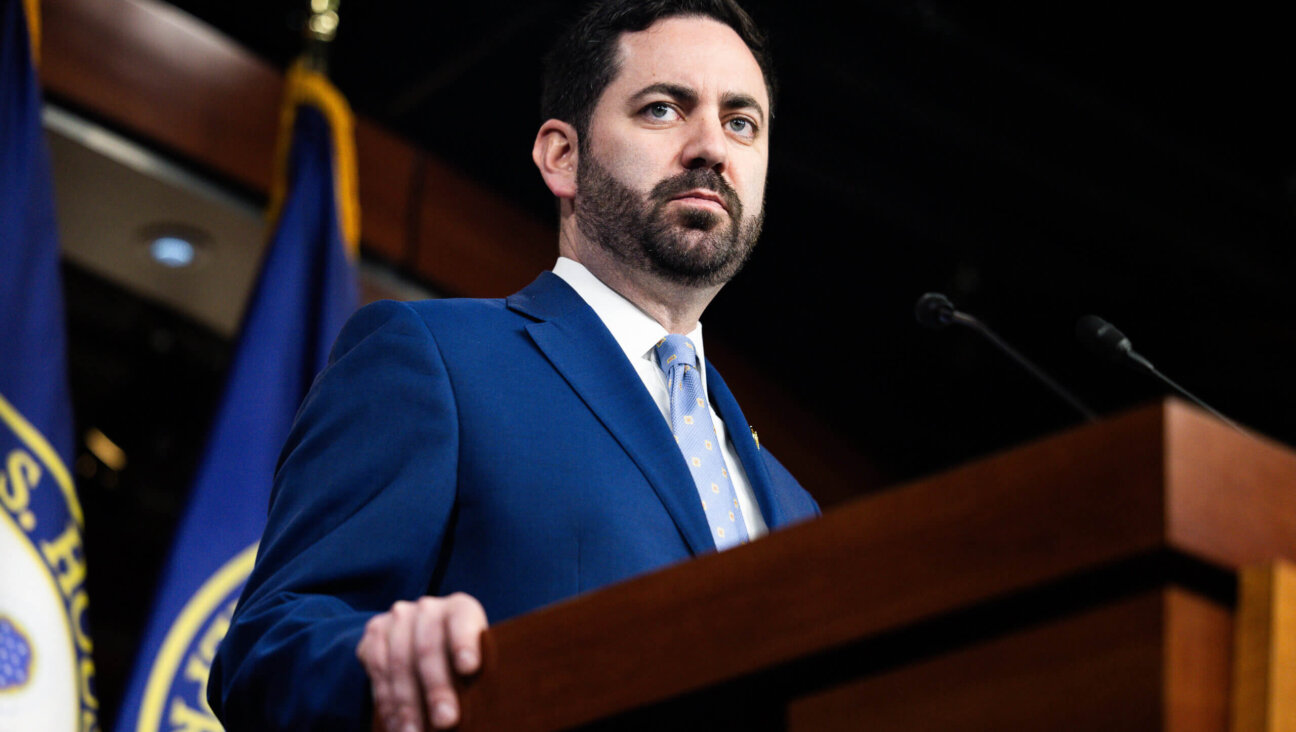Why Bernie Sanders Needs a Come-to-Jesus Moment

Image by Getty Images
In casting the first official ballots of the 2016 presidential race, Iowa’s caucus voters delivered more questions than they did answers. Chief among them: Who really won the Democratic contest — Hillary Clinton, leading by a fraction of a percentage point, or Bernie Sanders, fighting her to a virtual tie?
One historic milestone can be noted definitively: Sanders has become the first American Jewish candidate to win delegates to a major-party presidential convention — two generations after the Republican Sen. Margaret Chase Smith became the first woman to do so in 1964, and the Democratic Rep. Shirley Chisholm the first African American in 1972.
This alone won’t alter the race. Neither Sanders nor his critics made his Jewishness a campaign issue. True, his demeanor and Brooklyn accent make his ethnic identity nearly as unmistakable as Barack Obama’s. That may even be part of Sanders’s appeal to his youth brigades. He’s everyone’s Jewish grandpa, sort of a Great Schlep in reverse. But it won’t determine the race.
No, what changes the trajectory now is Sanders’s rise from 42 points behind Clinton last May to dead-even as election season formally opens. For Clinton, it’s 2008 all over again. Once again the supposedly inevitable Democrat is forced into an unexpected defensive battle against an implausible challenger.
True, Sanders carries a huge handicap — his avowed socialism. The smart money says America won’t elect a socialist president. Then again, the smart money in 2008 said a black man couldn’t be elected president. Especially not a black one-term senator whose middle name was Hussein. As it turned out, America was so sick of George W. Bush that, so the saying goes, the Democrats could have nominated a ham sandwich and won.
The question this time: Can they win with a pastrami sandwich? Hurting them is the fact that there’s no Bush administration to run against. On the contrary, this is a race to succeed a Democratic administration. That’s more awkward than it sounds. It makes it harder to run against the nation’s dismal condition.

Image by Getty Images
Working for the Democrats is the fact that the Republican Party and its main candidates have boxed themselves into a corner as the party of mean and nasty. This obviously speaks to a sector of the current electorate, but polls suggest its appeal is limited. Donald Trump and Ted Cruz are disliked far more than liked. Marco Rubio is vulnerable, too, given his views on issues like Social Security and upper-income tax cuts.
What’s unclear after Iowa is whether turned-off independents will opt instead for either Democrat.
Clinton had been the presumed heir apparent to a popular political dynasty. Granted, supporters knew her appeal was limited to one side of the political divide. The other side sees in her everything they detest about Washington liberals. Her plan — the standard modern Democratic playbook — has been to mobilize the emerging liberal coalition of women, minorities and youth and ride it to the usual narrow victory, counting on fear of Republican extremism to mobilize turnout.
After Iowa, that plan looks shakier. Clinton has now managed to falter at the starting gate before two Democratic upstarts in a row. She’s more vulnerable than most observers imagined. Her enthusiasm deficit is chronic and crippling. She lost badly among the young, a key element in the putative Democratic coalition. Iowa caucus-goers under age 30 gave her just 14% to Sanders’s 84%. Her strongest showing was a 69%–26% margin among voters over 65 years old. If Democrats imagine themselves the party of the new American majority, Clinton’s an odd standard-bearer.
And Sanders? Conventional wisdom says Republicans will brand him a communist and tear him to shreds once campaigning gets serious, once Koch and Adelson cash starts flowing. He might possibly beat back the attacks by the force of his quirky charisma. Or he might not.
But Sanders’s biggest problem lies in the essence of his message. When he talks about “political revolution,” he means rebuilding the New Deal coalition by winning back the white working class. He’d craft a broad alliance around issues of economic fairness. He basically wants to roll back the Reagan revolution and pick up where Franklin Roosevelt left off. Crucially, issues that have become Democratic touchstones — issues of culture and identity, of gender, race and lifestyle — become secondary.
The underlying assumption is that elevating those issues to the top of the Democratic agenda during the 1970s is what drove working-class whites into the Reagan camp. The result has been a 50-50 split electorate; Republican dominance of midterm elections, statehouses and Congress; steadily worsening economic inequality and, ironically, defeat after defeat on the very issues Democrats champion, from abortion to mass incarceration to church-state separation.
It’s become a cliché that Sanders has a problem with black voters. But that understates the quandary. He faces active opposition from an array of black leaders. They understand exactly what he’s about. In plain terms, he puts racism behind economic inequality as America’s most pressing problem. Given the legacy of slavery and the ongoing crises of black America, that’s an agonizing choice. It’s in all Americans’ enlightened self-interest to strive for a nation purged of its bigotries. But enlightened self-interest rarely wins elections. Voters look to political parties to tell them what’s in it for them.
Blunt honesty is Sanders’s trademark. It’s time to crank it up. He’s proving in Iowa and New Hampshire that he can mobilize white liberals. Now’s the time for an all-out effort to reach the African-American community — and simultaneously, the white working class.
He should be plunging into public appearances and round-robin meetings with opinion leaders in the black community, both personally and through surrogates. He needs to get past the nostalgic pablum about marching in the South 50 years ago, and lay out his roadmap for today and tomorrow: building a genuine rainbow coalition to reclaim the American majority. Yes, around economic justice.
This is the right time for a big-picture speech that goes beyond billionaire-bashing and presents his vision — sort of an “I have a dream” speech. He might do it twice: once in a church in South Carolina, and again in a union hall in Ohio or Michigan. He could acknowledge that the upheavals of the past half-century have left a lot of wounds that haven’t yet healed, that America still has a lot of work to do. But right now the house is burning, and if working Americans don’t come together despite the hurts and suspicions, all the progress that’s been made since Martin Luther King Jr. spoke could well be lost.
He needs to say that working people aren’t each other’s enemies. That Jesus’s greatest lesson was forgiveness, and Sanders’s own tradition reserves its holiest day for repenting and turning a fresh page. That his campaign is about bringing people together around the big things they share to give America a fresh start. He doesn’t have much time.
Contact J.J. Goldberg at [email protected]

I hope you appreciated this article. Before you go, I’d like to ask you to please support the Forward’s award-winning, nonprofit journalism during this critical time.
Now more than ever, American Jews need independent news they can trust, with reporting driven by truth, not ideology. We serve you, not any ideological agenda.
At a time when other newsrooms are closing or cutting back, the Forward has removed its paywall and invested additional resources to report on the ground from Israel and around the U.S. on the impact of the war, rising antisemitism and the protests on college campuses.
Readers like you make it all possible. Support our work by becoming a Forward Member and connect with our journalism and your community.
Make a gift of any size and become a Forward member today. You’ll support our mission to tell the American Jewish story fully and fairly.
— Rachel Fishman Feddersen, Publisher and CEO
Join our mission to tell the Jewish story fully and fairly.

























